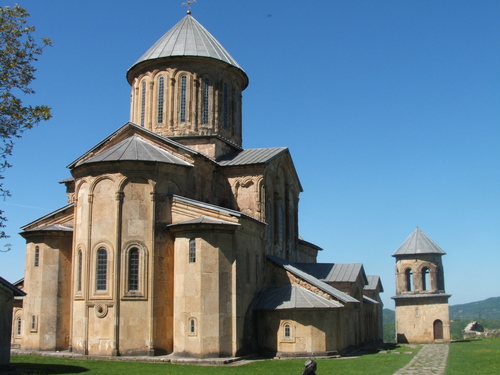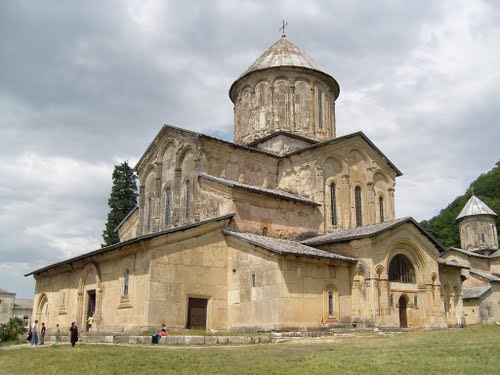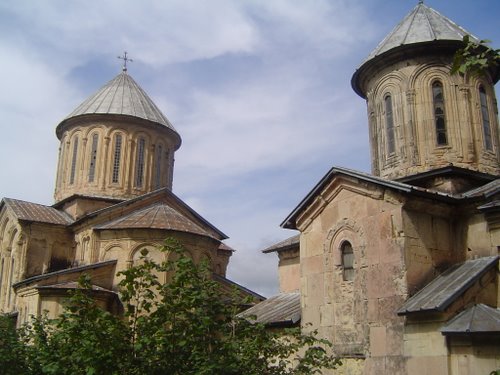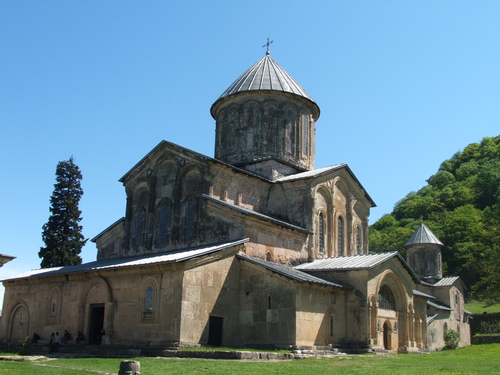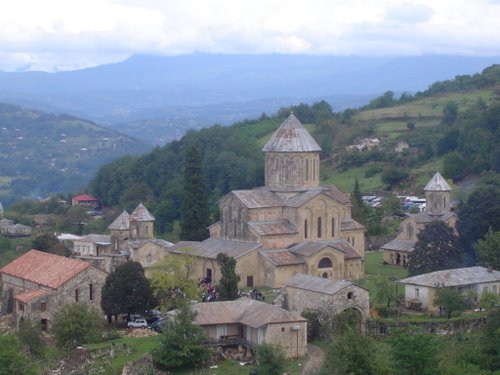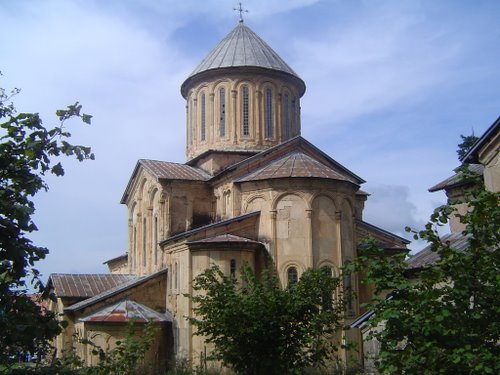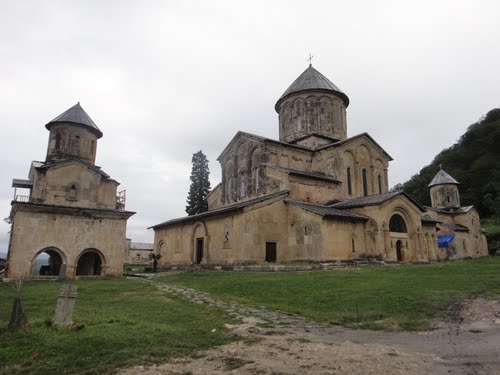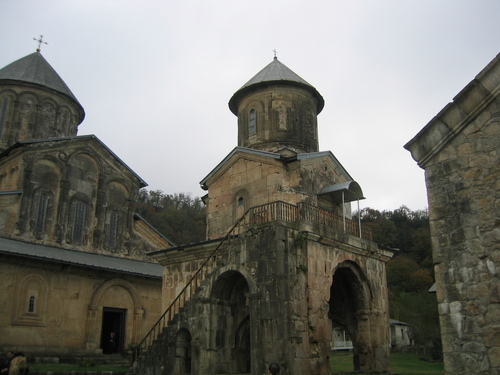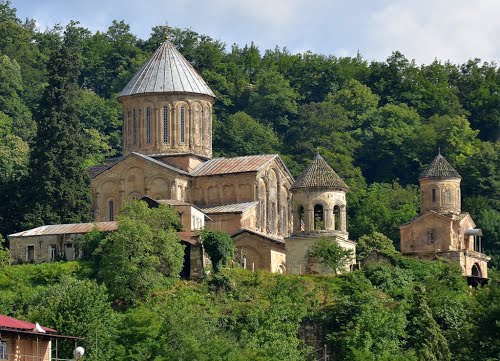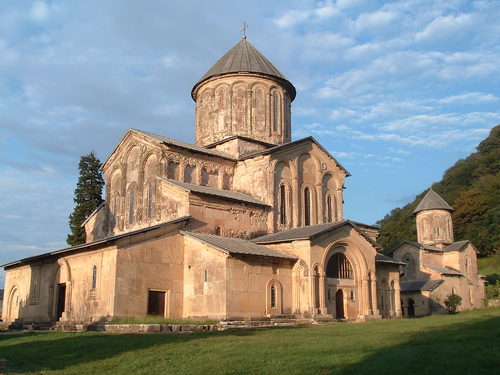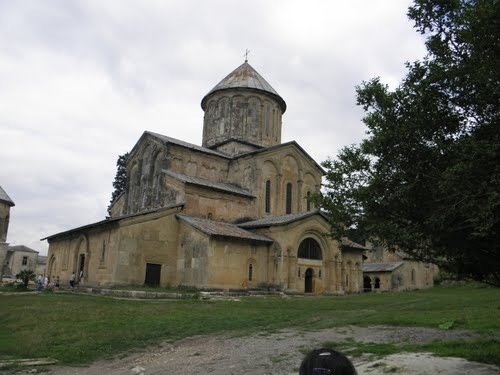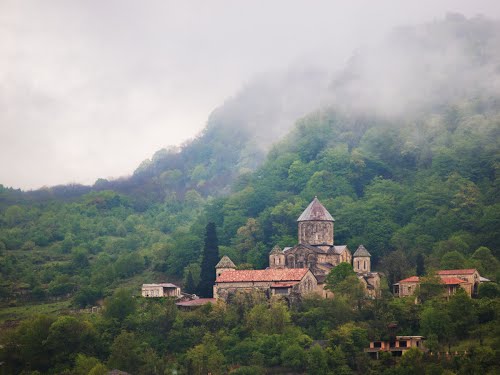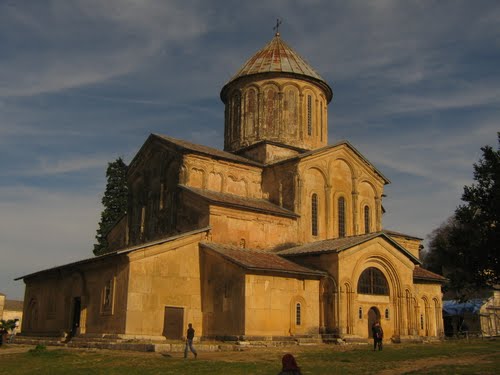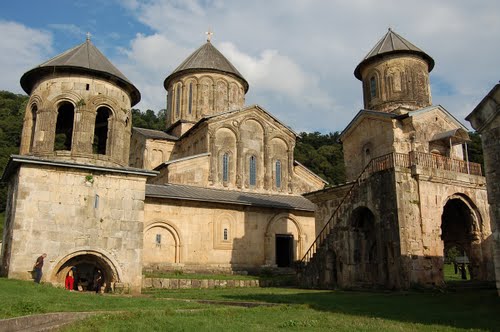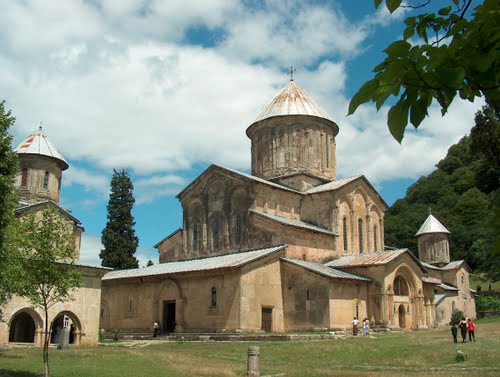Gelati is a medieval monastic complex near Kutaisi, in the Imereti region of western Georgia. A masterpiece of the Georgian Golden Age, Gelati was founded in 1106 by King David IV of Georgia and is recognized by UNESCO as a World Heritage Site.
Significance
Historically, Gelati was one of the main cultural and intellectual centers in Georgia. It had an Academy which employed some of the most celebrated Georgian scientists, theologians and philosophers, many of whom had previously been active at various orthodox monasteries abroad, such as the Mangana Monastery in Constantinople. Among the scientists were celebrated scholars as Ioane Petritsi and Arsen Ikaltoeli. Due to the extensive work carried out by the Gelati Academy, people of the time called it "a new Hellas" and "a second Athos".
The Gelati Monastery has preserved a great number of murals and manuscripts dating back to the 12th to 17th centuries. The Khakhuli triptych was enshrined at Gelati until being stolen in 1859. Gelati is the burial site of its founder and one of the greatest Georgian kings David IV. Near King David's grave are the gates of Ganja, which were taken as a trophy by King Demetrius I of Georgia in 1138.

